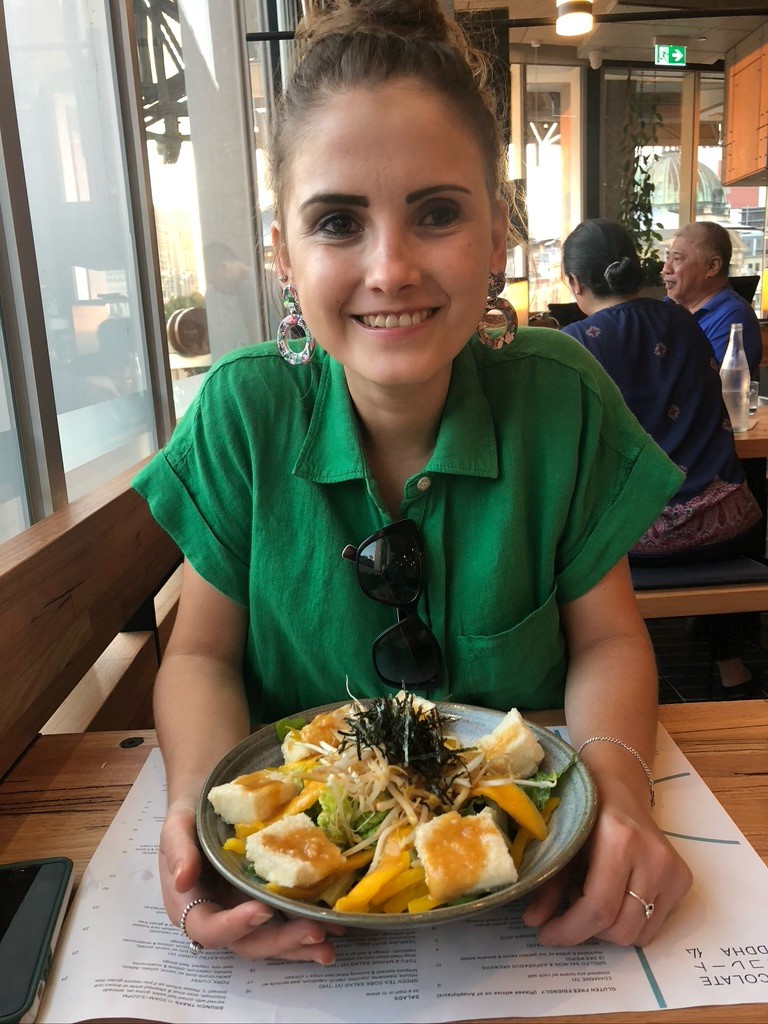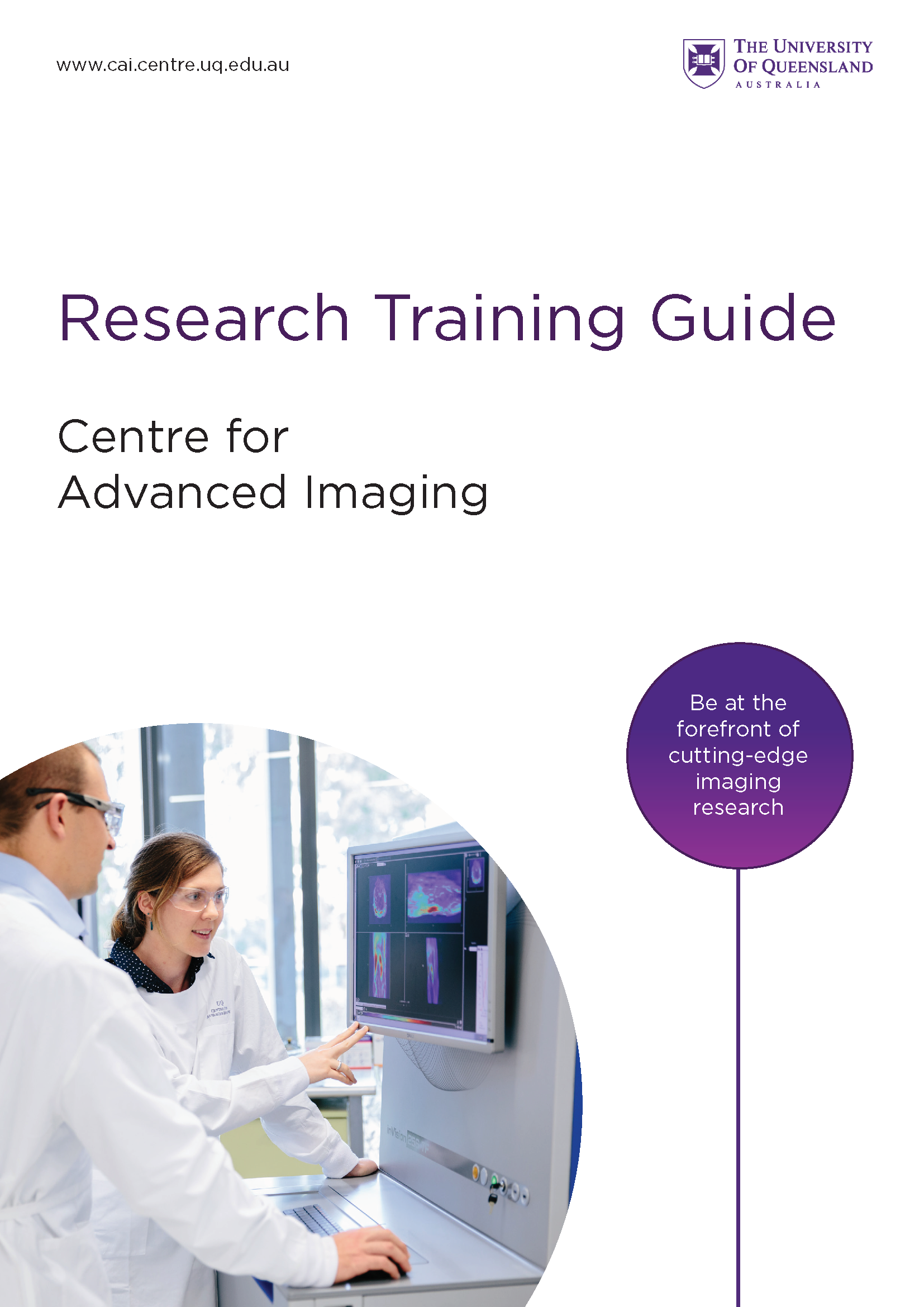Undergraduate Study
From hardware engineering to biomedical imaging, through to micro-imaging and spectroscopy, explore exciting research opportunities available at our centre
Honours is an exciting and intensive year of study in which you will undertake your own research project under the supervision of one of our researchers. Skills developed throughout the year are communication skills, scientific writing, research design and analysis, critical thinking, and developing practical skills relevant to your research project. You will be a member of a research group that uses cutting-edge imaging technology to work towards a common goal. Completion of the Honours program enables you to proceed directly to an MPhil or PhD.
Students are typically enrolled through the School of Biomedical Sciences or School of Chemistry and Molecular Biosciences but will complete their research project at CAI.
What to do next:
1. Browse through our academic staff profiles to find an area that you are interested in and that suits your undergraduate degree.
2. Read our HDR Research Training Guide
3. Contact the researcher directly via email.
4. Watch our information webinar video below.
For more details about our students' journeys and the types of research projects we offer, watch the video below of our 2020 Honours and Research Information Session. This webinar includes talks presented by our Honours and PhD students about their study journeys, talks from our research experts (Associate Professor Martijn Cloos and Dr Yanni Chin), and a Q&A with our team when we answered questions from interested students.
The UQ Summer Research program is the opportunity for undergraduate and postgraduate coursework students to get involved in an exciting research project within the Centre for Advanced Imaging for 6 weeks during the summer vacation period (November to February). Scholarships are available for selected students. For more information and to apply please go to UQ Employability.
2024 Summer Research Program
6 weeks between 8 January - 16 February 2024.
- Modulating hyperbranched polymer structures for use as personalised nanomedicines in cancer diagnosis and treatment with Dr Craig Bell
- Deep learning based myocardial tissue segmentation for diganosing cardiac sarcoidosis in patients with Dr Shahrzad Moinian
- Developing a deep learning model for brain magnetic resonance image harmonisation with Dr Shahrzad Moinian
- Metals in medicine: Designing new radiopharmaceuticals with A/Prof. Brett Paterson
- Whole brain MRI features for Alzheimer's disease diagnosis using machine learning with A/Prof. Viktor Vegh
- Depression biomarkers identified using machine learning with A/Prof. Viktor Vegh
- Machine learning based prediction of seizure onset zone in focal epilepsy with A/Prof. Viktor Vegh
- Optimising Pb-212 radiolabelling for cancer therapy with Dr James Wood
- Improving pharmacokinetic profiles of Zr-89 PET ligands for personalised medicine with Dr James Wood
The UQ Winter Research program is an opportunity for UQ undergraduate and postgraduate coursework students to become involved in exciting research within the Centre for Advanced Imaging for 4 weeks during the winter vacation period (June/July). Scholarships are available for selected students. For more information and to apply please go to UQ Employability.
2023 Winter Research Program
4 weeks between between 26 June - 21 July, 2023.
- Polymer nanocarriers for personalised medicines with Dr Craig Bell
- Develop a Matlab app/toolbox to automate optimisation of fitted two-dimensional Electron Paramagnetic Resonance with Associate Professor Jeff Harmer
- Protein structure and function using paramagnetic tags and Electron Paramagnetic Resonance with Associate Professor Jeff Harmer
- Metals in medicine: New radiopharmaceuticals for imaging cancer with Associate Professor Brett Paterson
- Hyperpolarisation of 15N-tagged nanomedicines for Magnetic Resonance Imaging (MRI) with Dr Rhia Stone
Please contact the project supervisor to discuss the project before submitting your application.
Our honours program involves a diversity of projects from our different areas of research. Honours students can choose from projects in areas such as engineering, biomedical science, chemistry and computational science.
Katelin Yarde is a Bachelor of Engineering (Honours) and Bachelor of Science dual degree student with majors in Biomedical and Electrical Engineering and Biomedical Science. She is currently in her final year of undergraduate study (2020) and completing her honours project with CAI (Barth Group).
CAI Honours Student Testimonial

Katelin Yarde, Honours student (BE/BSc): Whole brain myelin mapping and fibre orientation assessment using MRI
My name is Katelin Yarde and I’m in my final year of a Bachelors of Engineering (Honours)/Science, majoring in Biomedical and Electrical Engineering, and Biomedical Science respectively.
I am currently undertaking a year-long Honours project at the CAI, looking at “Whole brain myelin mapping and fibre orientation assessment using MRI”. My supervisor is Professor Markus Barth (Barth research group) and I work under Dr Steffen Bollmann who has been helping me through the project.
My honours year has entailed analysing Diffusion Weighted Images to obtain WM fibre orientations throughout the brain, and visualisation of many key central nervous tracts such as the corpus callosum and cortico-spinal tracts.
Specifically, I have been using the MRtrix software, which has allowed me to process the images, removing noise and other image artefacts, and then running commands. These have allowed me to eventually infer the diffusion directions of water within the brain, which we can discern the WM tract orientations from.
I am now in the process of writing a pipeline that allows MRI analysis to be conducted on image data from multiple subjects, with lots of changing function parameters, to see how these can affect the image output at the end.
How we can manipulate MRI image analysis by these methods could be useful in the clinical scenario, and determining if one pipeline is more advantageous for looking for a certain clinical outcome, like detection of a tumour or brain lesion.
Due to COVID-19, my honours year has been mostly online, however, this has been manageable with the help of a remote desktop connection on my laptop to all of the necessary programs I need to run analysis on MRI images and to visualise the outputs at the end. I have regular meetings with Dr Bollmann and Professor Barth to keep up to date with my progress and for them to offer advice during each step of the way.
This year I have learnt a lot about Magnetic Resonance Imaging. I came into the project knowing a small amount about the basic principles of MRI, but that’s all. I have learnt about all of the ‘behind the scenes’ things that are done between acquiring the image, to processing it and then seeing the results on a screen.
The highlights of doing an honours program at CAI are that I have been exposed to what medical research looks like, and have really gained an insight into utilising computer analysis tools to better inform clinicians about patient data. I have a strong desire to work in the medical field in the future, and this honours year has definitely provided me with insight into study areas I may want to pursue in the future.I would definitely recommend completing honours at the CAI as it exposes you to areas of medical research that you would otherwise not have access to. You are not just one of the many students in a lab, working under the supervision of a researcher who dictates your project, you are actually the one making the decisions on what you’d like to do, and how you’d like to do it.
It marries scientific research with computer analysis tools to better inform clinical practice in the future. The CAI not only gives you the option to look at the practical side of Magnetic Resonance imaging but also how these images then translate to the clinical field for disease diagnosis or injury monitoring.
Despite feeling like I was thrown in the deep end at the start, this experience has allowed me to learn so much more than the regular scope of a University subject. And both Professor Barth and Dr Bollmann have given me an extensive amount of support throughout the journey.
The best part of my experience was definitely the exposure in general, and the mentorship Professor Barth and Dr Bollmann have provided me is invaluable.
The staff have so much experience in such diverse fields, and learning from them is a really exciting process. I strongly encourage you all to think about pursuing an honours year at the CAI.

